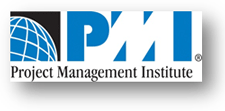|
Before any project can get started, the project has to be defined. You have to know what you want to accomplish before you can set out to accomplish that project. The first step in defining a project is the development of a project charter, generally written by the project sponsor in conjunction with a project manager. Ultimate authorization of the project comes from the sponsor. Chart Your CourseSo, what does a project charter do and what are some of the inputs to developing that charter? The project charter is the official document formally bringing the project into existence, granting authorization to move forward. This document also grants the authority for the project manager to commit funds and other corporate resources to the project. The project charter should be broad enough that it should not require change during the course of the project, but should detail high-level requirements for the project. Input factors that will assist in writing an effective project charter include the project statement of work (SOW) that details business needs, a product scope statement, and a strategic plan. The SOW should include a formal business case detailing the demand for the product, organizational requirements, customer requirements, technological advances that will result from the product, and any legal requirements. Any contracts involved should be included in developing the charter. The charter should also take into consideration enterprise environmental factors such as government or organizational standards, organizational infrastructure limitations and requirements, and marketplace condition and factors. Finally, any organizational assets available from other projects that can be used in the current project should be included. What’s in a Project CharterTypical factors contained within a project charter include: the start and end date of the project, the name of the project manager, the purpose and justification of the project, measurable project objectives, criteria for measuring the success of the project, assumptions about the project, as well as known issues and risks, and finally, a summary milestone schedule and high-level budgets for the project. Often, organizations will utilize internal or external experts to develop the project charter. This would include internal employees who have developed past charters, industry consultants, project stakeholders, resources from professional organizations, associations, and industry groups, subject matter experts, and, if the company has one, staff from the project management office (PMO). An effective project charter should include: the purpose and justification for the project, measurable objectives and success criteria, high-level requirements, descriptions, risks, milestones and schedules, and a summary budget. What’s NextOnly when the project charter has been written and formally approved does the project officially launch. In the next issue, we will look at the development of the project plan. For more information, see Project Management Institute’s Project Management Body of Knowledge (PMBOK). For more information about Digital Check scanners, visit digitalcheck.com, call (847) 446-2285, or contact us. |

Check out Digital Check’s Teller and Branch Products:
|





